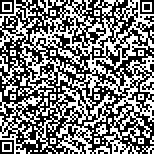附件
|
| 引用本文: | 李俊杰,何隆华,戴锦芳,李金莲.基于遥感影像纹理信息的湖泊围网养殖区提取.湖泊科学,2006,18(4):337-342. DOI:10.18307/2006.0403 |
| LI Junjie,HE Longhua,DAI Jingfang,LI Jinlian.Extract enclosure culture in lakes based on remote sensing image texture information. J. Lake Sci.2006,18(4):337-342. DOI:10.18307/2006.0403 |
|
| |
|
|
| 本文已被:浏览 8626次 下载 4824次 |

码上扫一扫! |
|
|
| 基于遥感影像纹理信息的湖泊围网养殖区提取 |
|
李俊杰1,2, 何隆华1, 戴锦芳1, 李金莲1,2
|
|
1.中国科学院南京地理与湖泊研究所, 南京 210008;2.中国科学院研究生院, 北京 100039
|
|
| 摘要: |
| 中国东部许多湖泊被人为围网养殖开发,高密度的围网养殖区较容易导致湖泊富营养化和水质恶化,因此人们利用遥感数据开展了湖泊围网养殖区的调查研究.对于湖泊围网养殖区的提取大多采用多光谱分类或目视解译手工数字化,多光谱分类围网养殖区和自然水体易于混淆,而手工数字化对于大区域提取工作量比较大.论文提出了基于遥感影像纹理信息的湖泊围网养殖区提取方法,事实证明此方法易于实现且提取精度高.该文选用中巴资源卫星02星多光谱数据,以白马湖为试验区,首先采用归一化差值植被指数提取水体及少部分光谱特征与之相似的人工建筑物和裸土,再采用主成份分析对研究区影像进行数据压缩和几何信息增强,利用灰度共生矩阵对影像纹理信息进行分析,以均值为量化指标,确定其最佳阈值,最后以决策树分类方法提取湖泊围网养殖区. |
| 关键词: 中巴资源卫星 纹理 湖泊围网养殖 决策树 |
| DOI:10.18307/2006.0403 |
| 分类号: |
| 基金项目:中国资源卫星应用中心项目、中国科学院知识创新工程项目(INF105-SDB-1-22);江苏省自然科学基金项目(BK2002149)联合资助 |
|
| Extract enclosure culture in lakes based on remote sensing image texture information |
|
LI Junjie1,2, HE Longhua1, DAI Jingfang1, LI Jinlian1,2
|
|
1.Nanjing Institute of Geography and Limnology, Chinese Academy of Sciences, Nanjing 210008, P. R. China;2.Graduate School, Chinese Academy of Sciences, Beijing 100039, P. R. China
|
| Abstract: |
| Most lakes in eastern China are exploited in the form of enclosure culture. The high density enclosure culture area is easy to cause lake eutrophication and deteriorate the water quality. So the lake enclosure culture area is focused by people and is usually extracted by using the multi-temporal remote sensing data and the multi-spectral classification or the manual digitization means. The multi-spectral classification is easy to confuse enclosure culture area with the natural water area and the manual digitization demands much time. This paper suggests a new method using the image texture information to extract lake enclosure area. The result is more accurate and the method demands less expense. Lake Baima is the study area and the image of the area is multi-spectral data of China Brazil Earth Resources Satellite 02. First the water area A the man-made area and the bare soil which has the similar special characteristics with the water are extracted by using the normalized difference water index. Then the principal component analysis was used to compress the multi-spectral data of the study area and enhance the texture informa-tion of the image. The third step Grey Level Co-occurrence Matrix (GLCM) was used to analyze the image, select a proper threshold of mean value which quantifies the GLCM. Finally, the lake enclosure culture area was extracted by using the decision tree. |
| Key words: Chirm Brazil Earth Resources Satellite texture enclosure culture in lake decision tree |
|
|
|
|